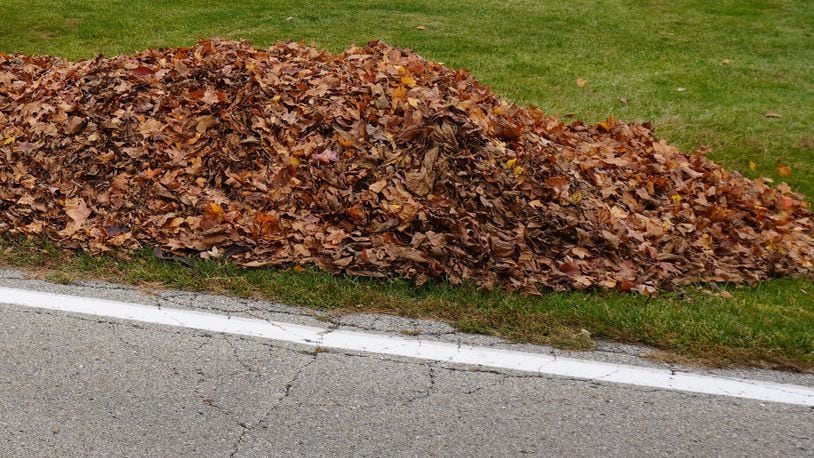This compost is fantastic to work into the soil. This organic matter holds nutrients that plants can use and helps improve soil structure. And it’s free if you have a tree or two in your landscape!
Mother Nature does this naturally over a long period. Next time you are in the woods, check out the soil composition under the trees. It’s nice, rich, friable, and has an earthy smell.
Of course, it takes a bit of work to get to the point of useable leafmould. You need a bin to contain the leaves and you also need to turn the pile periodically to allow air into the pile to speed up the process.
You also need moisture to keep the pile damp to allow the composting process to occur.
Leafmould composting takes longer than regular composting because you are only using leaves which are all carbon. Adding green stuff, such as grass clippings or fresh leaves, is regular composting and occurs a little faster, depending on your process.
Before you put the leaves into a bin or the compost container, they need to be chopped up into smaller pieces. Again, in nature, the larger leaves eventually break down, but they take a longer time. The smaller the leaf surface, the faster the breakdown.
You can use a regular compost bin or even trash bags to create leafmould. Family members bring me their bagged leaves and I throw them on the compost pile.
Eventually, we break them open and combine them into the compost pile. The leaves aren’t all the way broken down, but the compost pile eventually helps this process along.
If you have a lot of leaves, more than you can handle, mow over them as much as possible and break them down into small pieces that will eventually decay into the lawn. This also adds organic matter to your lawn.
However, if you have a TON of leaves, it doesn’t help the lawn if they are covering the turf area in layers. You should remove enough to allow the lawn area to be exposed to air over the winter.
And finally, if you must move them to the curb because you have more than you can handle, check to see if your township, community, etc. has a leaf collection day. Most do and they take them to a composting facility.
When the leafmould is ready, simply work it into the soil. Your plants will appreciate this!
Credit: Contributed
Credit: Contributed
Credit: Contributed
Credit: Contributed
Pamela Corle-Bennett is the state master gardener volunteer coordinator and horticulture educator for Ohio State University Extension. Contact her by email at bennett.27@osu.edu.
About the Author
